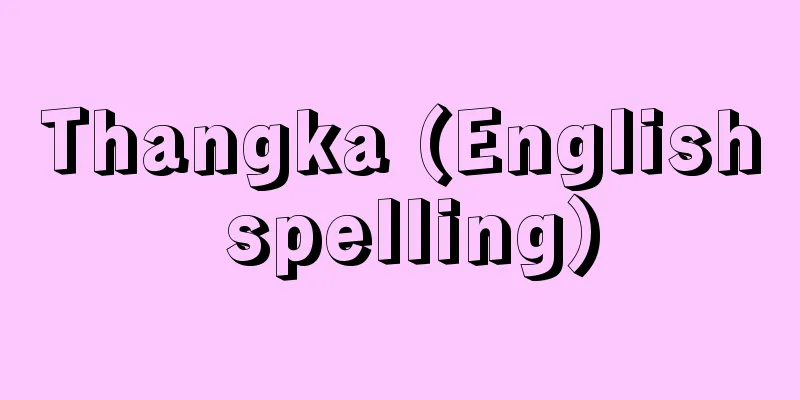Inspection - Kenchu

|
Land surveys in the Middle Ages. This refers not only to rice fields, but also to surveys of lay land, lacquer, mulberry, chestnuts, etc. In public lands, they were carried out by kokushi, and in manors, by manor lords. Formal surveys were usually carried out whenever a kokushi or manor lord was replaced, and are called shoken or dai shoken. In the presence of farmers, the surveyor would determine the land use, area, and names of tax payers for each plot, and compile a written "survey ledger." Based on the ledger, they would determine the salaries of temples, shrines, government officials, etc., and create a "survey record" that determined the area subject to tax levy. These ledger and list were kept as proof of land ownership, and no corrections were permitted until the next shoken. On the other hand, when natural disasters forced changes to the amount of tax, and other limited-purpose surveys were conducted frequently, they were called naiken. Naiken were temporary surveys conducted from time to time, and did not change the rights confirmed by seiken. Land survey methods varied from province to province and manor to manor, and included the use of walking sticks and ropes, stride measurements, and eyeballing. In any case, actual measurements were rare, and they were often conducted only through bookkeeping, known as iaiken. In exchange for the approval of land exempt from tax, a certification fee called kanryo was collected, and kanryo was also collected in iaiken as an approval of the old rights. When it became difficult to carry out surveys, the collection of kanryo became the substance of seiken. In the Middle Ages, surveys were considered to pollute the soil, and were not conducted during the doyo period. [Kiyoto Tomizawa] Source: Shogakukan Encyclopedia Nipponica About Encyclopedia Nipponica Information | Legend |
|
中世の土地調査。田畠のみならず、在家(ざいけ)、漆(うるし)・桑・栗(くり)などの調査をもいう。公領では国司、荘園(しょうえん)では荘園領主が実施する。正式な検注は国司や荘園領主の代替りごとに行われるのが常で、正検(しょうけん)、大(だい)検注などとよばれる。検注使が農民の立会いのもとで1区画ごとに地目(ちもく)、面積、年貢負担者名を確定し、これを書き上げた「検注取帳(とりちょう)」を作成する。取帳を基に寺社や役人などへの給与分を決め、年貢の賦課対象となる面積を確定した「検注目録(もくろく)」を作成する。この取帳・目録は、土地領有権を証明するものとして保管され、次の正検まで訂正することは許されなかった。他方、自然災害により年貢量を変更せざるをえないような場合など、限られた目的のために行われる調査は内検(ないけん)とよばれ、しばしば実施された。内検はその時々の臨時調査であり、正検によって確認された権利関係を変えるものではない。土地測量の方法は、国ごと荘園ごとにまちまちで、杖(つえ)や縄を用いたり、歩幅で測ったり、目算による場合もあった。いずれにしろ実測することはまれで、居合(いあい)検注といって、帳簿上の操作だけですますことが多かった。年貢免除地を承認するかわりに勘料(かんりょう)という認定料が徴収されるが、居合検注でも旧来の権利関係をそのまま承認するかわりとして勘料が徴収された。検注の実施が困難になると、勘料徴収が正検の内実となった。中世には検注が土を汚すことと考えられ、土用(どよう)の間はこれを行わなかった。 [富沢清人] 出典 小学館 日本大百科全書(ニッポニカ)日本大百科全書(ニッポニカ)について 情報 | 凡例 |
Recommend
Spinoza - Baruch de Spinoza
Dutch philosopher. Born in Amsterdam on November ...
Bridge Benkei
Noh piece. Fourth piece. Five-school current piec...
"Epigrams"
…Martialis stayed in Rome until 98, where he had ...
Chrysoberyl (English spelling)
It is an oxide mineral. It is also one of the gem...
pāśa (English spelling) pasa
…These scriptures are said to have been preached ...
Tsushima Straits
It refers to the sea area between Iki and Tsushim...
Saccocirrus labilis (English spelling)
… [Minoru Imajima]. … *Some of the terminology th...
Ion Chromatography
A type of ion exchange chromatography. A method i...
Luehdorfia puziloi (English spelling) Luehdorfia puziloi
…[Takakura Tadahiro]. … *Some of the terminology ...
Mauricius Flavius Tiberius
Born: 539. Cappadocia [Died] 602. Byzantine Empero...
Lithops salicola (English spelling)
… [Hiroshi Yuasa]. … *Some of the terminology tha...
House of Representatives
...As a result, presidential candidates are often...
Ajinomoto General Foods Co., Ltd. - Ajinomoto General Foods
...The expansion of the processed food division w...
Okazaki Kahei - Okazaki Kahei
Businessman. Born in Okayama Prefecture. Graduate...
Quinhydrone
A general term for a compound consisting of one qu...









